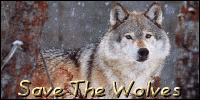|
|
Post by swampiewolfess on Jan 24, 2008 15:01:00 GMT -5
Outrageous: Fed Greenlights Killing Northern Rockies Wolves
The Fish & Wildlife Service just made it much easier to kill wolves in the Greater Yellowstone and Northern Rockies region -- even while they remain protected under the Endangered Species Act.
Write to Secretary Kempthorne to express your outrage today!
Increase your impact: Forward this message to five others who care about wildlife.
It’s happened. Despite the opposition of tens of thousands of Defenders supporters, the Fish & Wildlife Service just made it much easier to kill wolves in the Greater Yellowstone and Northern Rockies region -- even while they remain protected under the Endangered Species Act.
Take action now. Tell Interior Secretary Dirk Kempthorne that this rule change is unacceptable.
The change to the so-called “10j” rule announced today lowers the bar for killing wolves in Idaho, Montana and Wyoming -- opening the door to the slaughter of hundreds of wolves in the Greater Yellowstone and Northern Rockies region.
The states would only need to prove that wolves are a “major cause” of the inability of elk and deer to meet state management goals. Wolves could be killed even if they only have an effect on how elk herds move or behave -- not just if they reduce herd numbers.
Wildlife officials will be able to shoot, trap and kill endangered wolves -- even those that wander from the safety of Yellowstone National Park and other protected areas.
Write to Secretary Kempthorne to express your outrage today!
Remember, these wolves are still protected as an endangered species -- federal officials have yet to decide whether to remove protections under the Endangered Species Act for wolves in the Greater Yellowstone region.
But the rule change allows officials to start killing wolves as soon as March.
Please take action now. Tell Secretary Kempthorne that you are outraged by this rule change!
Thank you for all you do to protect our wildlife and the places it lives.
Sincerely,
Rodger Schlickeisen
President
Defenders of Wildlife
|
|
|
|
Post by swampiewolfess on Feb 21, 2008 14:38:24 GMT -5
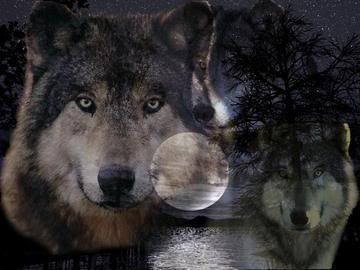 Just hours ago, the Bush administration announced its decision to remove federal protections for the gray wolves of the northern Rockies. Our only chance to stop the slaughter of this iconic species is immediate action in court. Right now, our legal team in Bozeman, Montana is mounting a swift, aggressive response-but court battles can be lengthy and expensive. That's why I turn to you. Time is of the essence. Please make your emergency contribution today. The administration's ill-considered decision clears the way for Idaho, Montana, and Wyoming to kill all but a mere 300 of the remaining 1,500 wolves within their borders—some of which call the Yellowstone area home. These wolves have only just begun to recover from the brink of extinction. With a population of only 1,500 in the northern Rockies, there are still not enough wolves to ensure the future survival of an animal that once numbered in the hundreds of thousands. The wolves are once again in extreme peril. Their future is uncertain and grim. Our legal effort is the very last line of defense for the wolf. But we cannot ensure the wellbeing of the wolves without your help. Please, make a donation today. If we fail, nearly 80% of the wolves in Idaho, Montana, and Wyoming could be killed, a huge setback to years of hard work restoring them to their natural habitat. You and I can't allow such a tragedy to happen. Make your contribution today and help us protect the wolves. Our team, hard at work in Bozeman, is counting on your support. Sincerely, Trip Van Noppen President, Earthjustice P.S. We simply cannot |
|
|
|
Post by swampiewolfess on Feb 21, 2008 14:44:20 GMT -5
The North American Gray Wolf The gray wolf (Canis lupus) also called the timber wolf, is the largest of about 41 wild species within the dog family, Canidae, of the order Carnivora. They range in size from 26" to 38" shoulder height, 39" to 80" in length (tip of nose to end of tail), and vary in weight from 57 to 130 pounds. Their coats may vary in color from grey to brown, from white to jet black. They usually hunt at night and feed primarily on large hoofed mammals such as deer, caribou, elk, and moose, but sometimes eat berries, birds, beaver, fish, and insects. Animals that they kill are usually young, old, or otherwise weaker members of their populations because they are easiest to capture. Most pursuits of prey range in length from 110 yds. to 3.1 miles. Healthy wolves rarely, if ever, attack humans. Their range once covered most of North America. However, today only a few upper states and Canada have a wolf population large enough to maintain itself. The gray wolf mates for life and lives in packs which can vary in size from 2 to over 15, but are usually from 4 to 7 wolves. The leader of the pack is normally the strongest male, who often determines when and where the pack will hunt, as well as other activities of the pack. Wolfpacks are formed primarily of family members and relatives. They may travel more often, and greater distances than any other terrestrial animal. Their territories may cover from 100 to 260 sq. mi, depending on the abundance of food and water. Territories may also overlap, although wolfpacks very seldom confront one another. Some wolves leave their packs to become lone wolves. Loners may start their own packs if a mate and a vacant area can be found. Breeding season can vary from January in low latitudes to April in high latitudes. A wolfpack will alternate between a stationary phase from spring through summer and a nomadic phase in autumn and winter. The stationary phase involves caring for pups at a den or homesite. During summer, most movements are toward or away from the pups, and adults often travel and hunt alone. By autumn, pups are capable of traveling extensively with the adults, so until the next whelping season the pack usually roams as a unit throughout its territory in search of prey. Though often only the highest ranking male and female in a pack will breed, all members of the pack are involved in raising the young. Mortality factors affecting wolves include persecution by humans, killing by other wolves, diseases, parasites, starvation, and injuries by prey. Most wolves probably live less than 10 years in the wild. 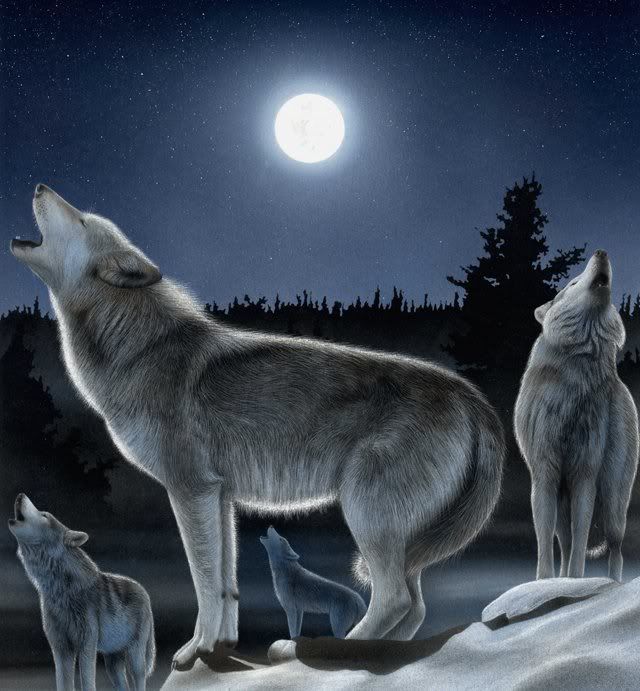 | Home | Arabian Wolves | Arctic Wolves |
|
|
|
Post by swampiewolfess on Feb 21, 2008 14:55:02 GMT -5
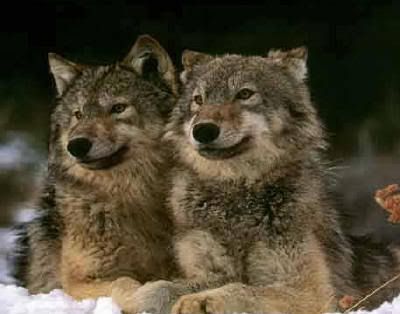 The North American Red Wolf Although it has been suggested that the red wolf (Canis rufus) originated as a fertile cross between gray wolves and coyotes, the red wolf may have existed in North America before both the gray wolf and the coyote. Fossils up to 750,000 years old indicate that the red wolf may be a close relative to a primitive ancestor of the North American canids. The red wolf is similar to but smaller than the gray wolf and is intermediate in many characteristics between gray wolves and coyotes. It often interbreeds with the coyote, and because of this, it is believed that the red wolf may eventually become extinct by hybridization, rather than by man. It ranges in size from 15" to 16" shoulder height, 55-65" in length, and can weigh anywhere from 40 to 90 pounds. Its colors range from cinnamon red to almost black, with tan markings above the eyes. It feeds mainly on birds, rabbits, and other small rodents, but will also hunt deer and other large prey if available. The red wolf's historic range covered the southeastern portion of the United States, reaching as far west as Texas and north to Illinois. Their preferred habitat was warm, moist, and densely vegetated, although they were also present in pine forests, bottom land hardwood forests, coastal prairies, and marshes. Destruction of forests and coastal marsh habitat, as well as widespread persecution and predator control activities, brought them close to extinction. All of this in addition to hybridization. In 1980, they were declared biologically extinct in the wild. In the wild, red wolves normally establish life-long mates, and their packs usually consist of an adult pair and the young. They reach breeding maturity in their second or third year. Breeding seasons can vary from March to May. Den sites include stream banks, enlarged burrows of other animals, hollow trees, and sandy knolls in coastal areas. |
|
|
|
Post by swampiewolfess on Feb 21, 2008 14:59:50 GMT -5
 The Arabian Wolf Standing approximately 26 inches shoulder height and weighing an average of 40 pounds, the Arabian Wolf is the smallest wolf subspecies, yet, the largest canid in Arabia. They have short greyish-beige hair which becomes much longer and thicker in winter. Their ears are large in comparison to the rest of it's body (similar to the maned wolf). Their eyes are naturally yellow with black pupils. However, many are found with brown eyes, revealing that somewhere down the line their ancestors have interbred with feral dogs. It is endangered in Arabia, and extinct in the United Arab Emerites. Because of a scarcity of food, they are found in packs only during mating season from October to December, or when food is plentiful. It will kill animals up to the size of a goat, but usually feeds on carrion, small birds, rodents, reptiles and insects. It also eats fruits and plants when meat is scarce. They dig burrows in the sand to protect themselves from the sun, and hunt mainly at night. The only time that Arabian wolves are known to be territorial is when their pups are born. The litter size can be as large as 12, but is usually only 2 or 3. They are blind at birth and weaned at about eight weeks when the parents start regurgitating food for them. |
|
|
|
Post by swampiewolfess on Feb 21, 2008 15:05:04 GMT -5
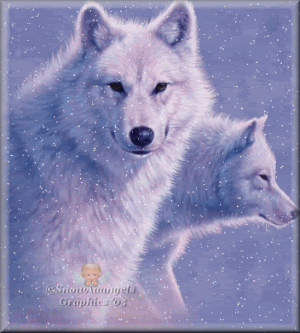 The Arctic Wolf Able to tolerate years of sub-zero temperatures, up to five months of darkness a year, and weeks without food, the arctic wolf lives in one of the few places on earth where it is safe from the greatest threat of all - man. Arctic wolves inhabit some of the most inhospitable terrain in the world. In April, the air temperature rarely rises above -22° F. The ground is permanently frozen. The arctic wolf is one of the few mammals that can tolerate these conditions. Details of the animal's life through much of the year are virtually unknown. Wolves usually live in small packs or family groups consisting of a breeding pair, their pups, and their unmated offspring from the prior several seasons. The dominant, or breeding, pair are known as the alpha male and alpha female. They are respected by the rest of the pack. All adults in the pack cooperate in feeding and caring for the young. Throughout the Fall and Winter, artic wolves remain on the move. After mating in March, the pregnant female leaves the pack to find a den to give birth to her pups. She may dig a new one. However, if the ground is frozen, she will be forced to return to an old den in a cave or rock cleft. The pups are born deaf, blind, and helpless. They are totally dependent on their mother, and she in turn relies on her mate to bring her the food she needs. After a month, the pups are able to eat meat. From then on, the whole pack shares the job of feeding them with regurgitatied meat from a kill. The pups may stike out on their own the following year. The arctic wolf preys on lemmings and arctic hare, but its most substantial source of food is musk oxen and caribou. Because of the scarcity of grazing plants, animals must roam a large area in order to find enough food to survive. They will kill virtually any animal they can catch, and eat every part of it, including skin, fur, and bones. The wolves have up to 800 square miles in which to search for their prey. When Winter temperatures plummet, the wolves may follow migrating caribou South. The arctic wolves must hunt together in packs when seeking large prey. The caribou or musk oxen are too powerful for any one wolf to take on alone. By the time the pack approches a herd of oxen out in the open, the chance of a surprise attack is long gone; the herd has already formed a defensive circle with the calves in the center. The wolves must then prowl around the herd forcing the oxen to shift their ground to face them. If the wolves are successful, the oxen will scatter. The wolves will then give chase, trying to isolate the young or weak. A musk ox will provide enough food to last the wolves several days. The shoulder height of the arctic wolf varies from 25 to 31 inches. On average, they are about 3 feet tall from head to toe. Their body length may vary from 3 to 5 feet (nose to tail). Their colors may range from red, gray, white and black. The approximate weight of a full grown male is 175 pounds. In captivity, an arctic wolf can live to be over 17 years. However, the average lifespan in the wild is but 7 years. Wolves in general have been under threat throughout history. The arctic wolf is the only subspecies still found over the whole of its original range. This is largely because it rarely encounters humans. |
|
|
|
Post by swampiewolfess on Feb 21, 2008 15:09:09 GMT -5
 The Dire Wolf (Canis dirus) The dire wolf became extinct somewhere between 4,000 and 16,000 years ago. This is thought to be partially because of its inability to compete with the faster, more intelligent gray wolf. It is the largest canid known to ever exist. And though it was similar in many ways to the gray wolf, the dire wolf was heavier built, more robust, with shorter and more powerful legs, and a larger head. Being a heavier animal with shorter legs, the dire wolf would have been slower and less adept at catching prey than the gray wolf. It is, therefore, believed that the dire wolf was more of a scavenger than predator. It would, however, hunt when the opportunity was there. Its teeth were more massive and strong, allowing it to easily consume carcasses. Although its head was larger, the brain case was smaller. A scavenger does not need to outsmart its prey. Also, being larger in size, it would have had less competition. A fossilized bone was discovered near the Ohio River in Indiana in 1854. However, it wasn't until years later it was determined that this fossil was of an unknown wolf species. It was named Canis Dirus, the Dire Wolf. Thousands of canis dirus fossils have been recovered from the La Brea tar pits in Los Angeles, California where water would be left floating on top of the tar after it rained. When attempting to drink from the pools of water, animals often became trapped in the tar below. The dire wolf and other predators, attempting to feed on the trapped animals, would often become trapped in the tar themselves. Dire Wolf fossils have been found in North, Central, and South America. Their exact range, however, is unknown. | |
|


